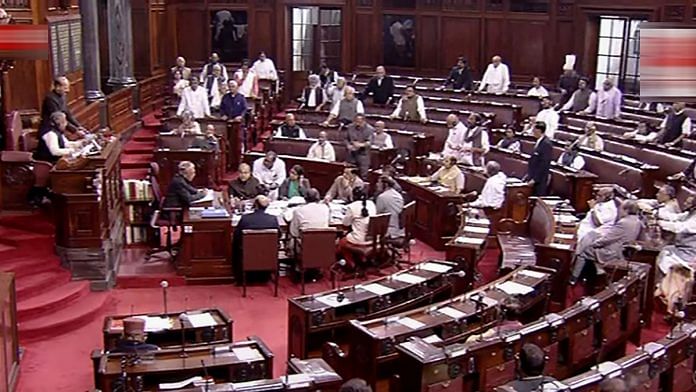In a parliamentary committee, which submitted its report in 2017 on the Surrogacy (Regulation) Bill 2016, there were only 5 women out of a total of 32 members. That’s a meagre 15 per cent representation for a bill that impacts women much more than men.
But this isn’t an anomaly.
A parliamentary committee that submitted a report to the government on ‘issues related to safety of women’ earlier this year had just two female members out of 31 members.
The committee on human resource development, which sent in its report in 2011 on the Protection of Women against Sexual Harassment at Workplace Bill 2010 had three women members out of 31 members. This Bill, with a few changes, became the landmark 2013 law.
Another committee, which submitted its report on the Indecent Representation of Women (Prohibition) Amendment Bill 2012 in 2013 had only two women members out of a total of 31 members. The committee that prepared a report last year on the functioning of the “Rashtriya Mahila Kosh”, a national credit fund for women, did a little better and had eight women out of 31 members.
The only standing committee that stands out is the one on ‘Empowerment of Women’. All 30 members of this committee are women.
Also read: Why Mamata & Naveen’s move is important — just 9% of India’s MPs and MLAs are women
A parliamentary problem
The lack of women on these parliamentary committees is only a symptom of a larger problem of women being absent from Indian public life.
For the uninitiated, parliamentary committees vet proposed legislation and parliamentary rules even though their recommendations are not binding on the government. They are essentially miniature Parliaments in themselves, usually comprising members across party lines from both Lok Sabha and Rajya Sabha. The members of these committees are elected by both the House or nominated by the speaker.
The current representation of women MPs in Parliament is abysmal. The Lok Sabha has 14 per cent women while the Rajya Sabha has 10 per cent. This, when compared to the fact that 48 per cent of the Indian electorate consists of women, lays bare the skewed representation within Parliament. This translates to similar representation within the parliamentary committees as well.
The Constitution (108th Amendment) Bill, commonly known as the Women’s Reservation Bill, did propose 33 per cent reservation for women in Parliament and state legislatures. The bill was passed by the Rajya Sabha in 2010, but has been in the cold storage in the Lok Sabha for a decade now.
In many ways, the ghost of coverture still haunts women. Hiding behind the tokenistic act of giving a few more tickets to women politicians lies less say for them in policy decisions that impact them.
Also read: More women are entering Indian Parliament but at the cost of SC, ST men
A say in all
There is also a problem with asking more representation for women only in committees that exclusively deal with their issues.
Surely women have things to say on corporate or taxation or health or defence legislation — essentially, laws that aren’t specifically gender-based, but impact women as well, as members of the society. Surely, they have an equal right to fully participate in the political sphere and the public realm.
At the end of the day, gender justice needs to be mainstreamed, with men and women bringing their own expertise to the table— expertise that does not perpetuate gender stereotypes, and expertise that doesn’t ghettoise women’s issues.
We’ve all heard by now that countries with women leaders are tackling the coronavirus pandemic better. But new research shows, the reason why these countries are doing better is not only because of women politicians. Societies that choose to elect women also de facto have greater women’s representation in many other fields— arts, science, policy, culture.
That’s what India must aim for.
Views are personal.






